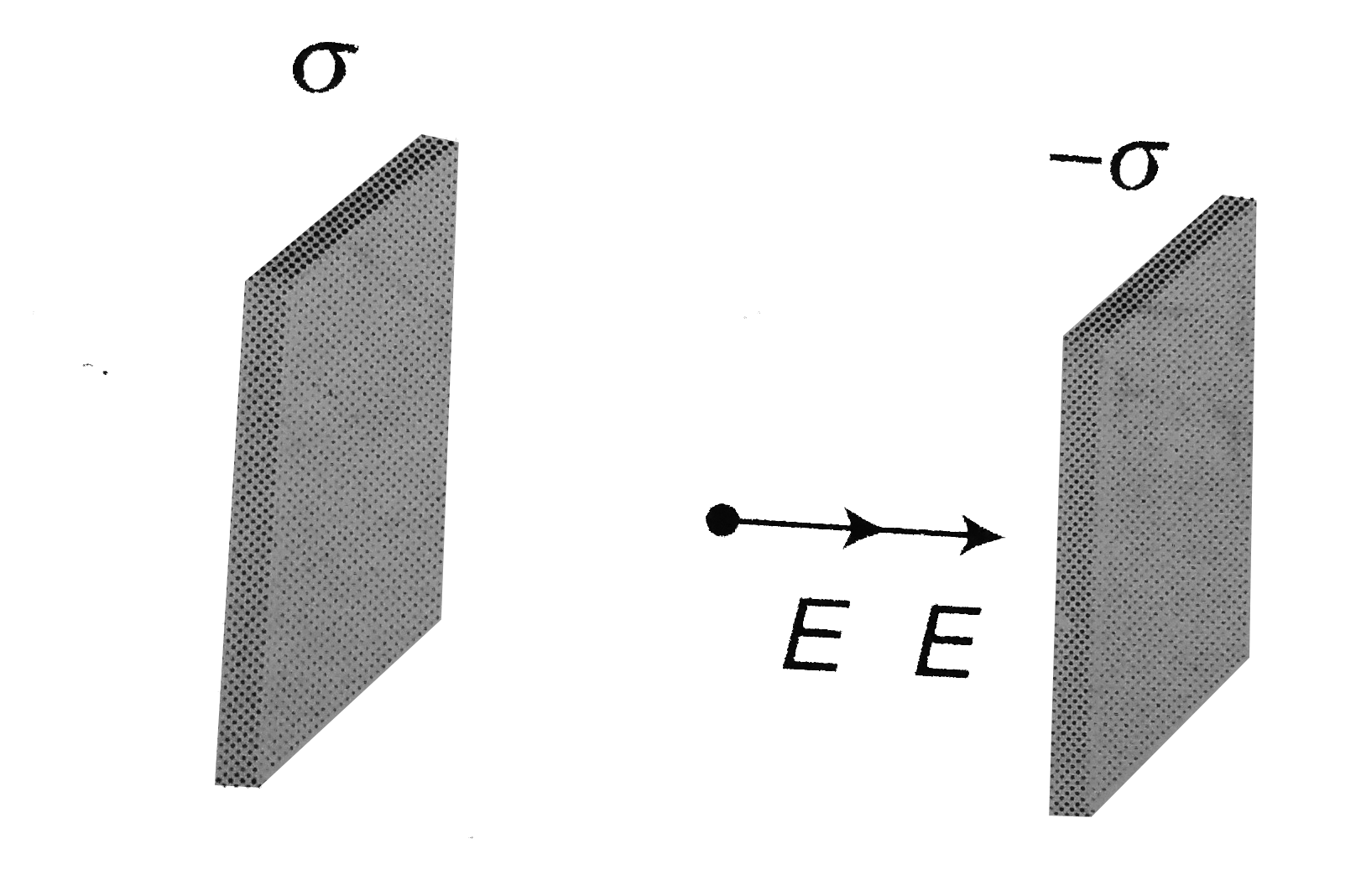Two infinitely long parallel conducting plates having surface charge densities and respectively, are separated by a small distance. The medium between the plates is vacuum. If is the dielectric permittivity of vacuum, then the electric field in the region between the plates is
The correct Answer is:C
 ltBrgt Electric field between the plates is
ltBrgt Electric field between the plates is
Topper's Solved these Questions
- ELECTRIC CHARGE, FIELD & FLUXBook:A2ZChapter:ELECTRIC CHARGE, FIELD & FLUXExercise:Electric Dipole
Explore 29 Videos
- ELECTRIC CHARGE, FIELD & FLUXBook:A2ZChapter:ELECTRIC CHARGE, FIELD & FLUXExercise:Problems Based On Mixed Concepts
Explore 40 Videos
- ELECTRIC CHARGE, FIELD & FLUXBook:A2ZChapter:ELECTRIC CHARGE, FIELD & FLUXExercise:Electric Field And Motion
Explore 37 Videos
- DUAL NATURE OF RADIATION AND MATTERBook:A2ZChapter:DUAL NATURE OF RADIATION AND MATTERExercise:Section D - Chapter End Test
Explore 30 Videos
- ELECTRIC POTENTIAL & CAPACITANCEBook:A2ZChapter:ELECTRIC POTENTIAL & CAPACITANCEExercise:Section D - Chapter End Test
Explore 29 Videos
Similar Questions
Two large metal plates with surface charge densities +σ and −σ are separated from each other by a distance of d. Find the force per unit area acting between them.
View Solution(i) If two similar large plates, each of area A having surface charge densities +σ and −σ are separated by a distance d in air,find the expression for
(a) field at points between the two plates and on outer side of the plates. Specify the direction of the field in each case.
(b) the potential difference between the plates.
(c) the capacitance of the capacitor so formed.
(ii) Two metallic spheres of radii R and 2R are charged so that both of these have same surface charge density σ. If they are connected to each other with a conducting wire, in which direction will the charge flow and why ?
View Solution
Knowledge Check
Two infinitely long parallel conducting plates having surface charge densities +σ and −σ respectively, are separated by a small distance. The medium between the plates is vacuum. If ε0 is the dielectric permittivity of vacuum, then the electric field in the region between the plates is
A0 volts/meterBσ2ε0volts/meterCσε0volts/meterD2σε0volts/meterTwo infinitely long parallel sheets having surface charge densities +σand−σ respectively are separated by a small distance. The electric field in the region between the plates is
A0Bσ2∈0Cσ∈0D2σ∈0Two infinitely long. Parallel, thin sheets, having surface charge densities +σand−σ respectively are separated. By a small distance. The medium between the sheets is vacuum. The electric field in the region between the sheets is
AZeroBσ2∈0Cσ∈0D2σ∈0
Two large parallel thin plates having uniform charge densities +σand−σ are kept in X-Z plane at a distance d apart. Sketch an equipotential surface due to electric field between the plates. If a particle of mass m and charge −q remains stationary between the plates, what is the magnitude and direction of the filed ?
View Solutionwo uniformly large parallel thin plates having charge densities +σand−σ are kept in the X-Z plane at a distance 'd' apart. Sketch an equipotential surface due to electric field between the plates. If a particle of mass m and charge'- q' remains stationary between the plates, what is the magnitude and direction of this field ?
View SolutionTwo large parallel plane sheets have uniform charge densities + σand−σ. Determine the electric field (i) between the sheets, and (ii) outside the sheets.
View SolutionThree non-conducting large parallel plates have surface charge densities σ,−2σand4σ respectively as shown in the figure. The electric field at the point P is

View SolutionA parallel plate air condenser is charged and then disconnected from the charging battery. Now the space between the plates is filled with a dielectric then, it electric field strength between the plates
View Solution
